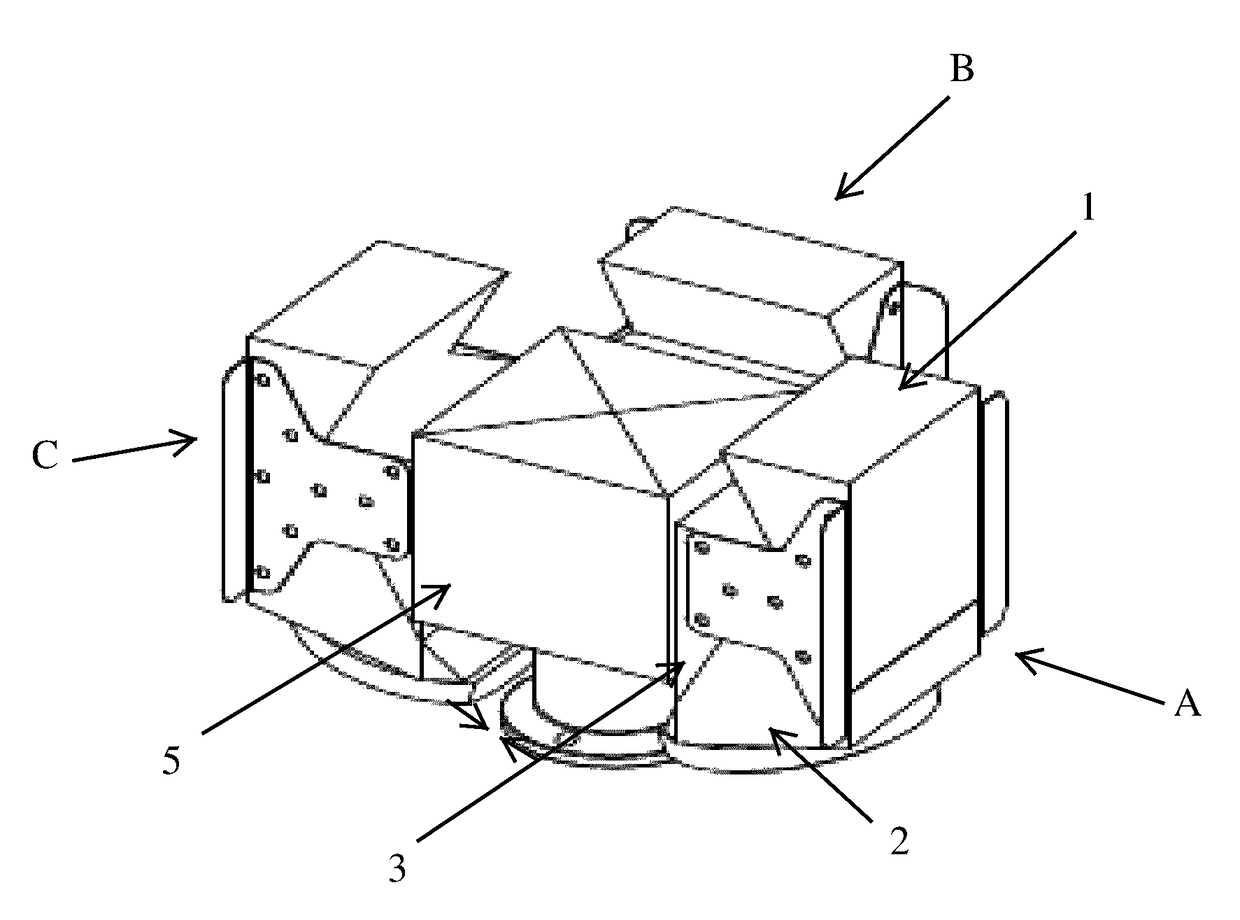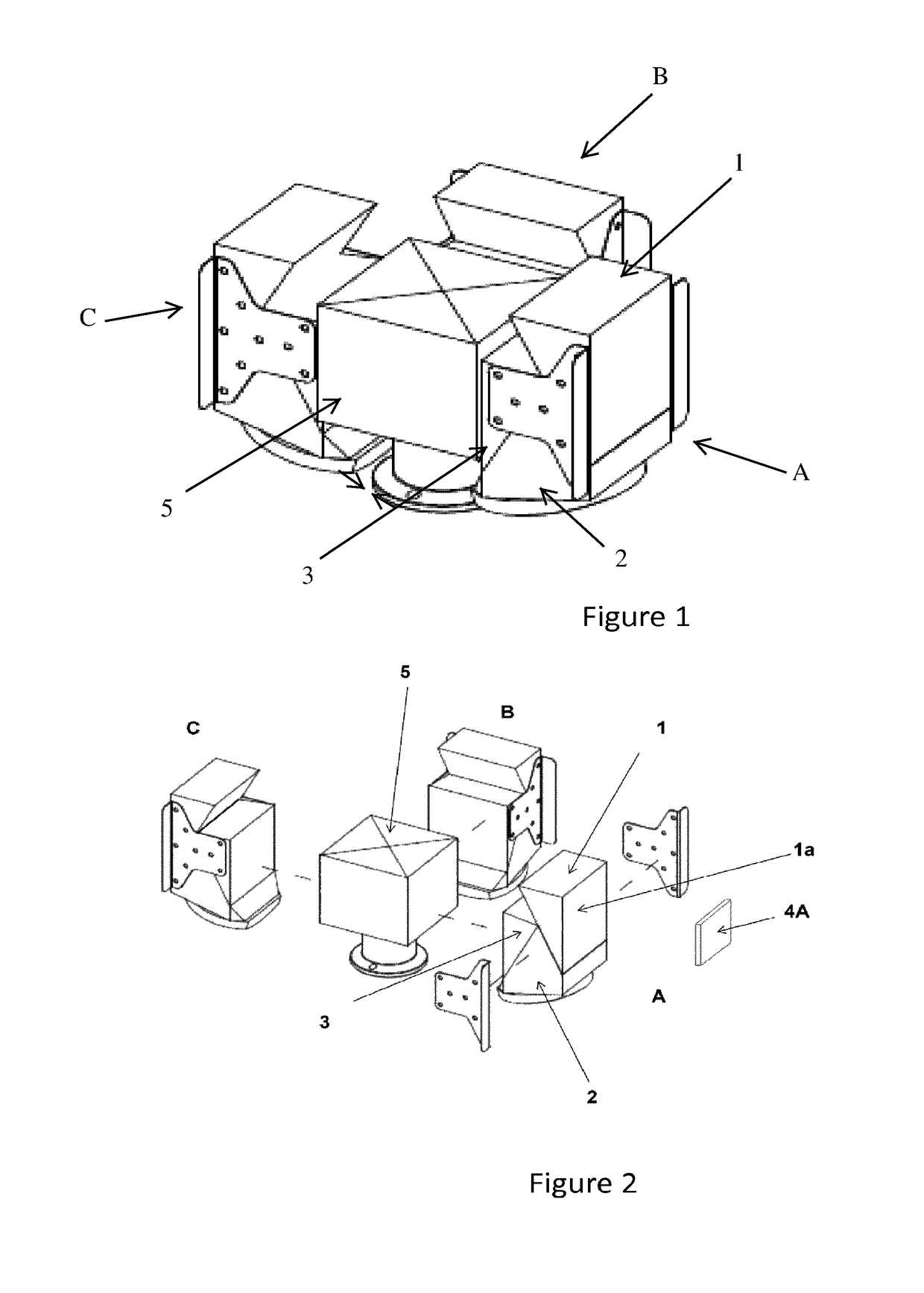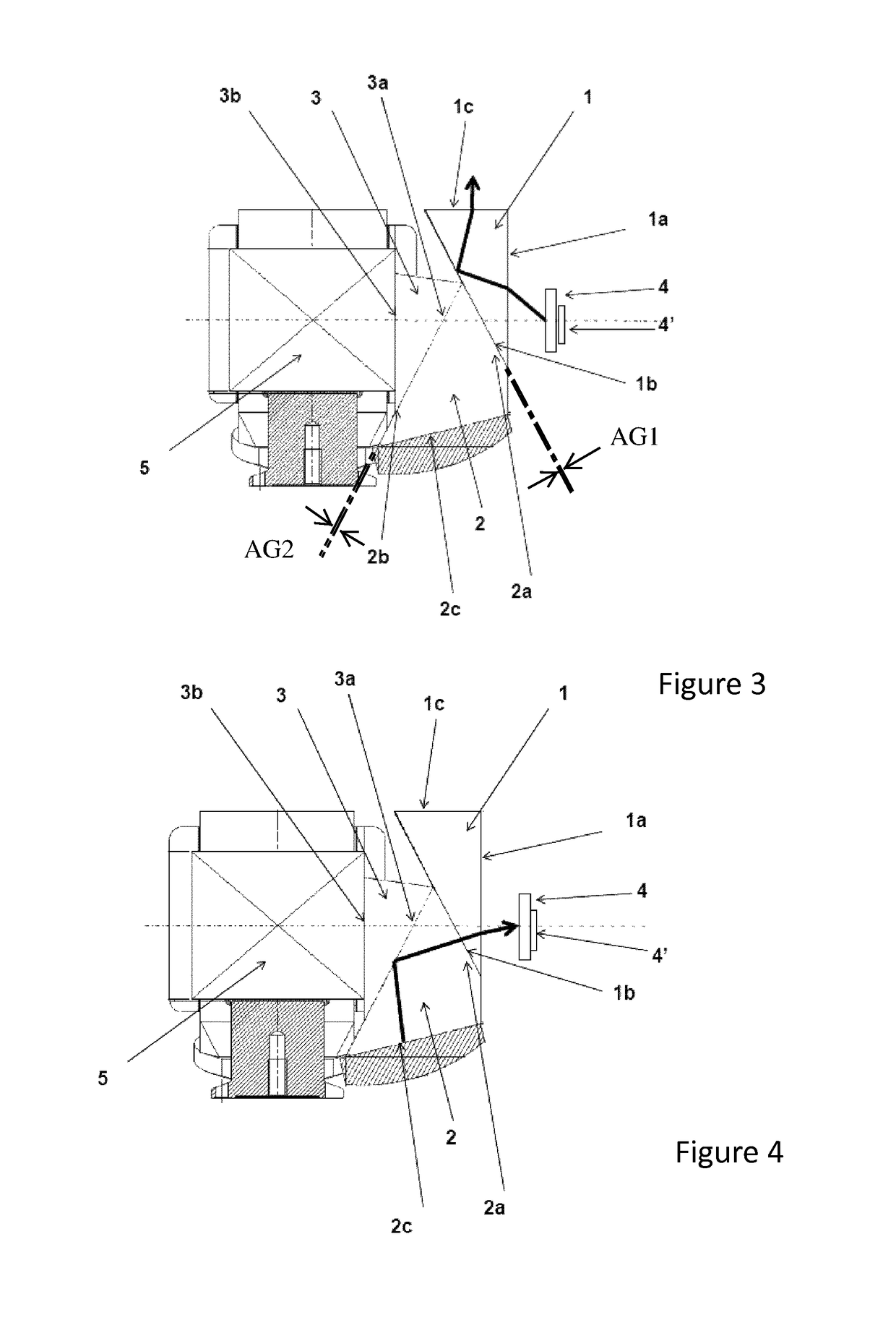Projection subsystem for high contrast projection system
a projection system and projection subsystem technology, applied in the field of projection subsystems for high contrast projection systems, can solve the problems of increasing the cost of pj lenses, reducing the efficiency of light isolation design, and longer backworking distance of projection lenses, so as to maintain the contrast of high contrast projection systems
- Summary
- Abstract
- Description
- Claims
- Application Information
AI Technical Summary
Benefits of technology
Problems solved by technology
Method used
Image
Examples
specific embodiment
[0097]The following is a specific embodiment of the present invention which is non-limiting.
[0098]Materials used: Glass type is BK7 or similar, with a refraction index varying from 1.514 to 1.528 over the useful wavelength range. The highest index value corresponds to the shortest wavelength.
[0099]Only a fraction of the etendue is used and the F / number is limited to F / 2.4 instead of the “usable” F / 1.7.
[0100]The half cone angle is 12 degrees in air for the illumination, the ON-state, the flat state and the OFF-state.
[0101]The lowest ray in the ON-state cone (the ray with the biggest incidence angle on the TIR surface 2c) reaches the TIR surface 2c at an incidence angle equal to the critical angle when the TIR angle A is equal to 33.45° for n=1.514 and 33.06° for n=1.528.
[0102]The maximum A value (see picture below) that will ensure that all the ON-state rays of all useful wavelengths will pass through the TIR surface 2c is thus 33.06°
[0103]The highest ray in the illumination cone (th...
PUM
 Login to View More
Login to View More Abstract
Description
Claims
Application Information
 Login to View More
Login to View More - R&D
- Intellectual Property
- Life Sciences
- Materials
- Tech Scout
- Unparalleled Data Quality
- Higher Quality Content
- 60% Fewer Hallucinations
Browse by: Latest US Patents, China's latest patents, Technical Efficacy Thesaurus, Application Domain, Technology Topic, Popular Technical Reports.
© 2025 PatSnap. All rights reserved.Legal|Privacy policy|Modern Slavery Act Transparency Statement|Sitemap|About US| Contact US: help@patsnap.com



